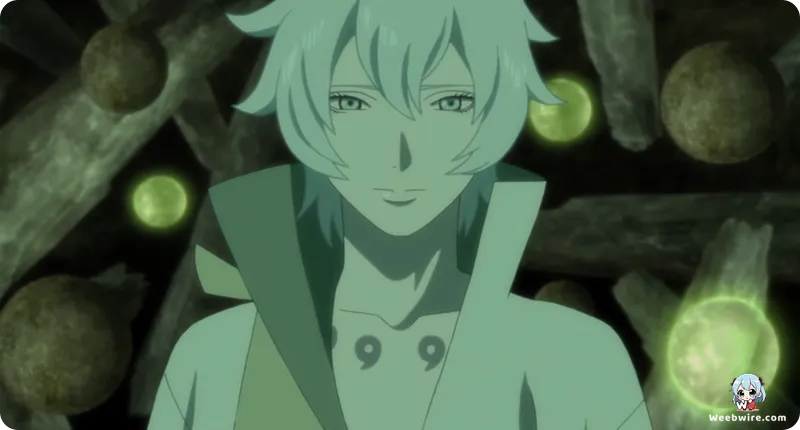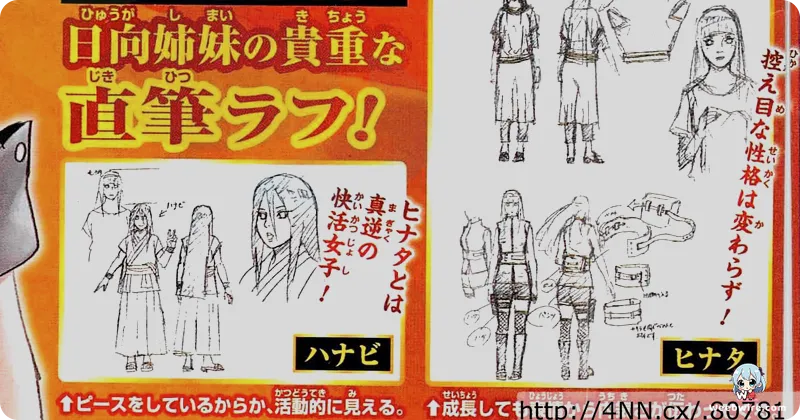Unveiling the Untold Love Story: Masashi Kishimoto's Personal Touch in 'The Last: Naruto the Movie'

Beyond the epic clashes and ninja camaraderie that define the iconic Naruto saga, 'The Last: Naruto the Movie' emerges as a profound cinematic departure, offering an unprecedented, intimate glimpse into the personal lives of its beloved characters. Unveiled in December 2014, this film was more than a mere addition to the franchise; it served as a pivotal, emotionally charged bridge, seamlessly connecting the conclusion of the Naruto Shippuden manga with the dawn of the Boruto era. Its central narrative meticulously unfurls the long-awaited romantic journey between Naruto Uzumaki and Hinata Hyuga, captivating legions of fans and providing a much-anticipated resolution to a relationship hinted at for years.
Masashi Kishimoto's Unprecedented Involvement
What truly elevates 'The Last' to a status of unique significance is the unparalleled personal involvement of creator Masashi Kishimoto. Deviating from his usual supervisory role in previous Naruto films, Kishimoto immersed himself deeply in the movie's creation, personally conceptualizing its core story, meticulously overseeing its narrative development, and even contributing extensively to character designs and script refinements. His fervent desire was to craft a definitive love story for Naruto and Hinata, a narrative thread he openly regretted not fully developing within the manga's concluding chapters. This hands-on dedication ensured an authentic and deeply resonant portrayal of their evolving relationship, transforming subtle hints into a concrete, emotionally rich culmination. Kishimoto’s commitment was so profound that he candidly admitted his initial struggles in sketching romantic scenes, underscoring his unwavering resolve to deliver a truly satisfying resolution to this crucial aspect of his characters' lives. His personal touch is palpable throughout the film, making it a true passion project.
The Symbolic Red Scarf
A central, deeply symbolic motif woven throughout the film is Hinata's iconic red scarf. Far from a simple accessory, its presence is imbued with profound meaning, symbolizing Hinata’s steadfast devotion to Naruto. The scarf serves as a poignant echo of their shared past—a fleeting, almost forgotten memory where a young Naruto was teased for his worn scarf, and Hinata, with quiet kindness, attempted to knit him a new one. In 'The Last', Hinata's meticulous act of knitting a new red scarf for Naruto, its subsequent tearing during their perilous journey, and Naruto’s eventual act of mending it himself, together form a powerful visual metaphor for their intertwined destinies. It signifies the threads of their deepening connection, Hinata's persistent efforts to bridge the distance between them, and ultimately, Naruto’s poignant realization and reciprocation of her enduring feelings—a subtle yet profound narrative device championed by Kishimoto himself to underscore their burgeoning bond and the culmination of years of unspoken affection.
Naruto's Visual Maturation
Naruto’s visual transformation was another deliberate narrative choice, signaling his profound maturation. For 'The Last', Naruto received a noticeably refined and adult design. His signature spiky hair was shorter and styled with a mature flair, his stature appeared taller, and his attire shifted from his customary vibrant orange jumpsuit to a more understated, sophisticated ensemble. These changes were anything but arbitrary; they were meticulously supervised by Kishimoto to visually articulate Naruto's transition from an impetuous, boisterous teenager to a more composed, responsible young adult—prepared to embrace the mantle of leadership and, crucially, a deeper, more personal relationship. This subtle yet significant design evolution powerfully communicated his readiness for the next chapter of his life, both as a formidable ninja and a developing man, reflecting his growth not just in power, but in character and emotional depth.
Expanding the Universe with Toneri Ōtsutsuki
The film also significantly enriched the Naruto universe's intricate lore through the introduction of Toneri Ōtsutsuki, the enigmatic main antagonist. Toneri, an original character crafted specifically for the movie, transcends the archetype of a generic villain. His lineage directly links him to Hamura Ōtsutsuki, the younger brother of the legendary Sage of Six Paths, Hagoromo, and the revered ancestor of the Hyuga clan. This profound connection deepens the celestial origins of chakra and the Ōtsutsuki clan, providing an intricate and ancient backstory for the Byakugan and the Hyuga's inherent destiny. The concept of a hidden civilization dwelling on the Moon, meticulously preserving ancient Ōtsutsuki traditions and harboring a centuries-old grievance against humanity, served as a fascinating and unexpected expansion of the world, masterfully intertwining the deeply personal stakes of Naruto and Hinata with a cosmic threat poised to engulf Earth itself. This antagonist provided a grand scale threat while still allowing the personal narrative to shine.
The Multifaceted Meaning of 'The Last'
Furthermore, the very title 'The Last: Naruto the Movie' resonates with multiple layers of profound meaning. While it literally marked the final film in the Naruto cinematic franchise before the narrative focus gracefully shifted to Boruto, it also metaphorically referred to the 'last' untold chapter of Naruto's teenage years—the definitive, culminating story of how he finally understood and unequivocally reciprocated Hinata’s unwavering feelings. It was strategically positioned as the essential missing piece, the ultimate conclusion to his deeply personal character arc that had been subtly, yet consistently, building throughout the entire manga and anime series. This meticulous narrative positioning ensured the film felt less like a standalone spin-off and more like an integral, indispensable part of the main narrative, providing crucial emotional closure and satisfying resolution for countless long-time fans who had waited years for this development.
Hinata's Resilient Character Arc

Beyond Naruto’s captivating growth, 'The Last' masterfully illuminated Hinata's compelling character arc, harmonizing her inherent gentleness with an unwavering inner fortitude. The movie prominently showcases her quiet courage and resolute determination, particularly evident in her unwavering mission to rescue her sister Hanabi and her unyielding devotion to Naruto, even when confronted by seemingly insurmountable challenges. Her quiet strength, often overshadowed by more outwardly expressive characters, takes center stage, firmly establishing her status not merely as a romantic interest, but as a formidable and resilient kunoichi in her own right. The iconic scene where she bravely confesses her feelings and offers Naruto the scarf, fully unveiling her heart, stands as a powerful testament to her remarkable journey from a shy, self-effacing girl to a confident, self-assured woman, truly coming into her own.
Ultimately, 'The Last: Naruto the Movie' stands as a crucial narrative and emotional conduit, seamlessly bridging the conclusion of Naruto Shippuden and the genesis of Boruto: Naruto Next Generations. It meticulously fills in the narrative gaps, vividly illustrating how the original generation matured, found love, and gracefully paved the way for the subsequent era of ninja. It is a resounding testament to the enduring appeal and boundless depth of the Naruto universe, proving conclusively that even after countless exhilarating battles, the most surprising and profoundly impactful stories can often be discovered in the quiet, heartfelt moments of personal connection, growth, and enduring love. This film is an indispensable chapter for any fan seeking a complete understanding of the beloved characters' journeys.
Credits
The Last: Naruto the Movie
Author
Masashi Kishimoto
Cover Art
Masashi Kishimoto
Studio
Studio Pierrot
Publisher
Shueisha
Producers





